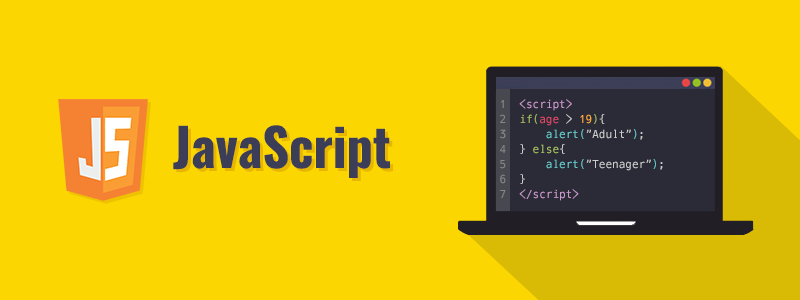
JavaScript is one of the core technologies of the web, alongside HTML and CSS. It enables developers to create interactive web pages and applications, making it an essential skill for front-end and full-stack developers.
What is JavaScript?
JavaScript (JS) is a high-level, interpreted programming language primarily used for enhancing web pages with interactivity and dynamic behavior. It is a client-side language, meaning it runs in the user’s web browser without needing a server connection. However, with the advent of Node.js, JavaScript can also be used for server-side development.
Key Features of JavaScript:
- Lightweight and Fast: Runs directly in browsers, making it efficient.
- Interpreted Language: Doesn’t require compilation; runs line-by-line.
- Object-Oriented: Supports prototype-based inheritance.
- Event-Driven and Asynchronous: Handles user actions and AJAX requests efficiently.
- Platform-Independent: Works across different browsers and operating systems.
History and Evolution of JavaScript
JavaScript was created by Brendan Eich in 1995 while working at Netscape. Initially, it was named Mocha, then LiveScript, and finally JavaScript to capitalize on the popularity of Java at that time.
Key Milestones in JavaScript’s Evolution:
- 1995: Brendan Eich develops JavaScript for Netscape Navigator.
- 1996: Microsoft introduces JScript in Internet Explorer.
- 1997: ECMAScript (ES) standard is established to unify JavaScript versions.
- 2009: ES5 introduces modern features like
JSON.parse()andstrict mode. - 2015: ES6 (ECMAScript 2015) revolutionizes JavaScript with
let,const, arrow functions, classes, and promises. - Ongoing: JavaScript continues evolving with new ES versions (e.g., ES7, ES8, ES2020), adding features like async/await, optional chaining, and more.
Setting Up the Development Environment
To start writing and executing JavaScript code, you need a development environment. Here are the essential tools:
1. Browser Console
Every modern web browser (Chrome, Firefox, Edge) comes with a JavaScript Console where you can execute JS code directly.
How to Open the Browser Console:
- Google Chrome: Press
Ctrl + Shift + J(Windows) orCmd + Option + J(Mac) - Firefox: Press
Ctrl + Shift + K(Windows) orCmd + Option + K(Mac) - Edge: Press
F12orCtrl + Shift + I
2. VS Code (Visual Studio Code)
VS Code is a powerful, lightweight code editor with excellent JavaScript support.
Steps to Set Up VS Code:
- Download and install VS Code from https://code.visualstudio.com/
- Install the JavaScript (ES6) Code Snippets extension for better development experience.
- Open a new .js file and start coding.
Running JavaScript Code
JavaScript can be executed in different ways depending on how it is embedded in an HTML document.
1. Inline JavaScript
JavaScript can be written directly inside an HTML element using the onclick attribute.
<button onclick="alert('Hello, JavaScript!')">Click Me</button>
2. Internal JavaScript
JavaScript code can be placed inside a <script> tag within an HTML file.
<!DOCTYPE html>
<html>
<head>
<title>Internal JavaScript</title>
<script>
function greet() {
alert('Welcome to JavaScript!');
}
</script>
</head>
<body>
<button onclick="greet()">Greet Me</button>
</body>
</html>
3. External JavaScript
For better maintainability, JavaScript is often written in an external file and linked to an HTML document.
Example: JavaScript File (script.js)
function greet() {
alert('Welcome to External JavaScript!');
}
Example: HTML File (index.html)
<!DOCTYPE html>
<html>
<head>
<title>External JavaScript</title>
<script src="script.js"></script>
</head>
<body>
<button onclick="greet()">Click Me</button>
</body>
</html>
Conclusion
JavaScript is the backbone of web development, allowing developers to build dynamic and interactive websites. Understanding its history, setting up a development environment, and knowing how to execute JS code in different ways are essential first steps in mastering the language.
Stay tuned for the next article, where we will dive deeper into JavaScript syntax and data types!
Leave a Comment